Botox - Patients ask, Dr. Ringpfeil answers
Please feel free to use the blog below to share information about Botox or to ask Dr. Franziska Ringpfeil a question that might be of interest to others.

Botox & Xeomin are among the most popular cosmetic treatments. They work. They are safe. They are predictable and provide noticeable results with virtually no downtime. To learn more about our Botox & Xeomin treatments, contact Ringpfeil Dermatology and book a consultation today.
We are excited to announce the addition of our new location in Abington, PA (19001). This expansion allows us to bring our exceptional dermatology care and cosmetic treatments closer to you. Contact us at 610.525.5250 or online to schedule your consultation today.
Please note: Estimates above may vary according to each patient.
Calculator is based on $15/unit. Enjoy a 20% discount if booked on Botox or Xeomin Day.

| price / syringe | lasts (months) | # treatments | |
|---|---|---|---|
| Botox | $16 / unit | 4-6 | 1 |
| Botox Special | $12.8 / unit | 4-6 | 1 |
Botox price in the Philadelphia area is $13-$27 per unit.
The cost of Botox may be different in the various facility types that offer the procedure.
Most plastic surgeons charge $16-$25 per unit. Almost all plastic surgery offices employ nurse injectors who actually perform the procedure.
Med Spas normally charge between $13-$18 per unit and employ part-time nurses.
Most dermatology offices charge between $15-$22 per unit. Normally, dermatology offices do not employ nurse injectors.
charge by the treated area - Some practices charge by the treated area. Treated areas may include Glabella, forehead, crow's feet, chin, nasolabial folds, and the jawline. This pricing strategy obscures the cost per unit in order to make a comparison harder. Effectively, patients often end up paying more than in other practices.
Our price is $16 per unit or $12.80 per unit during our weekly or monthly BOTOX Special Events. All injection are performed by our Board Certified Dermatologists and Dermatology PAs
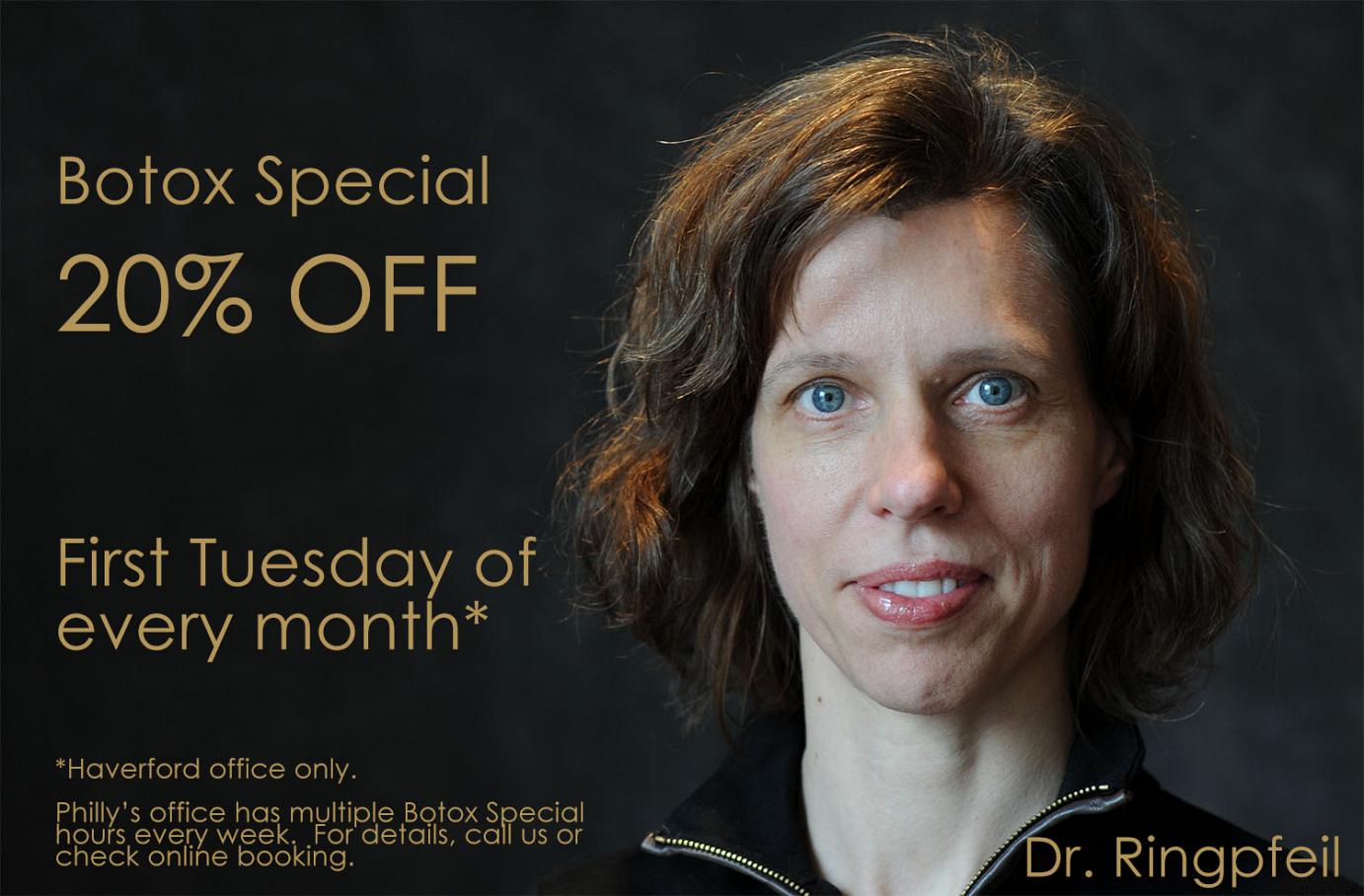
Plastic surgeon & Med Spas - Normally employ (temporary) nurses
Dermatology Practices - Employ dermatologists & dermatology-trained PA
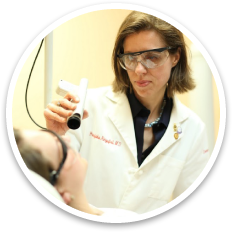
Dr. Ringpfeil: "Botox is so much more than just a wrinkle relaxer. It can help to enhance the attractive features of a face and restore youthfulness."

Dr. Milchak: "I combine art, knowledge, and experience to carefully examine a person's facial features and erase wrinkles and lines that reveal the youthfulness hidden behind them. This can help people look their best and feel more confident."

Xeomin® is the only pure wrinkle relaxer on the neuromodulator market and has been FDA-approved since 2010.
Its active molecule, botulinum toxin type A, is same as the one in Botox®, yet Xeomin® does not contain protein additives, which are responsible for partial or full resistance to all other neuromodulators over time. In other words, these proteins might prevent the desired effect of Botox®, Dysport®, Jeuveau® and other neuromodulators in 6-7% of individuals, or reduce the desired effect in a subset that is estimated to be far greater than 7%.
Studies published in March 2020 showed that there is no risk of developing antibodies against Xeomin®. This means that patients who have become resistant to other neuromodulators in the past should still experience successful results from Xeomin® injections 10-14 months after their last injection. The effects of Xeomin® injections usually become evident within 3-14 days and can last for 3-6 months. This makes Xeomin comparable to Botox in terms of both onset and duration of action.
Botox is best for dynamic and mild static lines on the upper face, as well as decreasing pebbly chins, vertical lip lines, and vertical bands that form on some aging necks. It typically lasts between 3-6 months, and the number of units required is determined by the strength of the targeted muscle.
The bacteria-derived toxin is injected into specific muscle groups to relax them and restore a youthful appearance. Only Botox, the US-approved grade of botulinum toxin A, is used in our office. Moderate and severe static lines require several sequential botox treatments to be erased. By erasing these wrinkles, you can enjoy a more youthful and refreshed appearance.
Relaxation of the dynamic face and neck rhytids (wrinkles), which results in a more youthful appearance and smooth, firmer skin.
Avoid aspirin and ibuprofen for 1-2 days
The final results of the treatment will be visible after 1-2 weeks and typically last for 3-6 months. Those who are satisfied with the effects of the treatment will usually repeat injections every 4 months in order to maintain their results.
Myasthenia gravis, allergies to egg white and kanamycin, pregnancy, and breastfeeding are all contraindications to this treatment.
A basic Botox treatment can help to temporarily reduce the appearance of facial wrinkles. More advanced uses of Botox may involve the shaping of certain facial features. If performed conservatively, your family and friends may notice that you look more relaxed and younger, without being able to figure out how you achieved this. Botox treatments can target the following areas and in some cases may be combined with dermal fillers such as Radiesse, Belotaro, and Juvéderm. This can help to create a more comprehensive and long-lasting result.
Note: Several treatments of Sculptra and Artefill can be used in place of Radiesse for the desired volume correction. Although their upfront cost is higher, fewer treatments are needed in the long run.
To address volume and wrinkles in areas indicated by 7,8,9,10, and 11 see similar illustration on the Dermal Filler Page.
Unlike fillers, which treat areas of the face where aging has caused volume loss, Botox targets facial wrinkles that are created by dynamic movement. As we age, loss of skin elasticity allows repetitive muscle movement to create a visible crease in the skin. Botox weakens this muscle movement and prevents lines from forming and often reverses wrinkles that have already formed.
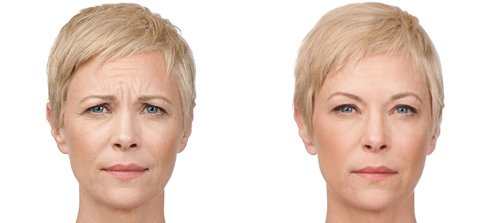
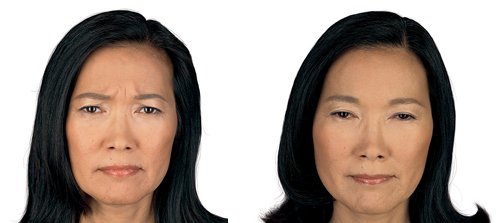
Many people are self-conscious about smiling as it can increase wrinkles over time. However, with every smile, our body releases endorphins which keep us happy. It would be unhealthy not to smile for fear of facial lines. Now, with the help of Botox, we can have a guilt-free smile without fearing that we are deepening the dreaded crow’s feet. With Botox treatments, we can untrain the forehead muscles and those between the brows to no longer look constantly strained or angry.
Botox works best to prevent wrinkles. Once wrinkles are visible at rest it will take some time until the skin returns to its original shape. Deep static lines may need extra help from a filler if they have not resolved after 3 Botox injections 4-6 months apart.
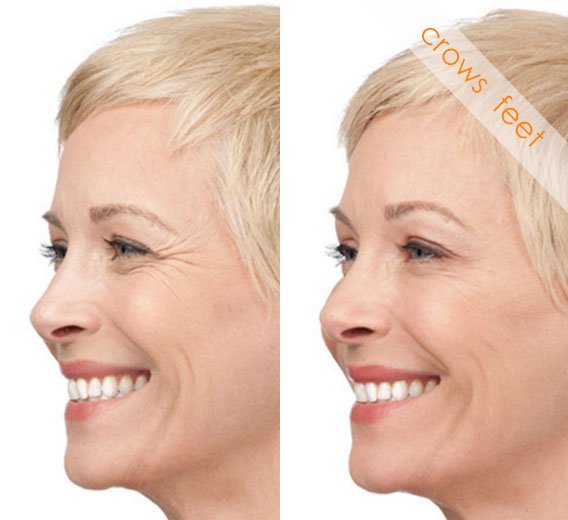
The most common areas targeted for wrinkle relaxation are the frown lines between the brows, crow's feet on the outside of the eyes, forehead lines, and vertical lines above and below the lips where lipstick may bleed.
In addition to wrinkle relaxation, the advanced use of Botox allows the shaping and lifting of brows and eyelids. We can up-turn corners of the mouth and soften a puckered chin. We can also reduce prominent vertical bands in the upper neck, minimize a gummy smile and turn a square face into a more triangular one.
Botox is currently FDA-approved for cosmetic use for frown lines between the brows and for the treatment of lines on the outside of the eyes that occur with smiling and squinting. Use in all other areas is off-label, similar to the use of aspirin for the prevention of heart attack or stroke.
Botox was the first neuromodulator approved for cosmetic use in the United States and is the only one currently approved for medical diagnoses. Dysport and Xeomin are equivalent neuromodulators that have since been approved by the FDA for wrinkle reduction on the upper face.
Dysport differs from the Botox brand with a slightly smaller molecular size and therefore slightly wider spread. Xeomin is almost identical to Botox but with a slight increase in purity, which reduces the risk of tolerance formation.
Cosmetic Botox has an excellent safety profile. You should not receive Botox during pregnancy or while nursing a baby. It is contraindicated in anyone with neuromuscular disorders or with a first-degree relative with a neuromuscular disorder. You should not receive Botox when you are sick. In addition to this, Dysport should be avoided by those with a cow milk allergy.
At Ringpfeil Advanced Dermatology, our team of skincare experts takes the time to understand our patients’ goals in order to produce the best results. Furthermore, our Botox treatments and other therapies are performed by our expertly trained, in-house dermatologists, and dermatology-trained certified physician assistants, ensuring the highest quality of service for our patients.
If you want to learn more about our Botox treatments, contact us and book a consultation today.
Botox is an FDA-approved treatment to help combat wrinkles in the face, neck, and other areas. This compound is generally regarded as safe and carries very little risk, as long as the treatment is performed by a certified specialist.
The results obtained through Botox can last anywhere between 3-6 months, after which a patient may require a touch-up session. With this in mind, touch-up sessions will not require as much Botox as the initial treatment.
Botox is derived from a neurotoxic compound produced by a microorganism called clostridium botulinum. However, as long as it’s administered by a board-certified dermatologist, Botox is completely safe and has a minimal chance of producing adverse side effects.
After the effects of Botox have completely worn off, patients will return to their prior state. Many patients feel like the treatment results in increased signs of aging, however, there is no evidence to support this idea. Keep in mind that the skin continues to age even while under the effects of Botox, so it’s normal to see a few more wrinkles than before if you have been receiving treatment for a long time.
There is no minimum age to get Botox, but patients in their mid-30s to mid-50s tend to see the best results.
I am interested in a Botox treatment for my frown lines. What is your fee for this procedure? Thank you.
We charge $15 per unit (As of July 2009, price might change in the future). The number of units required varies. Everybody’s muscle tone is different and therefore an examination in the relaxed and animated state is necessary to determine the number of units needed to relax dynamic frown lines. The number of units needed is directly related to the years the muscles had to create these lines. Women often require a lesser number of units than men. E.g., the average dose in the area between the eyes (glabella) of a 30 year old woman is approximately 15, whereas a man in the same age often requires 20 units to relax the muscle complex. If glabellar lines are no longer dynamic (very deep lines that are present in the relaxed state), a filler may be needed to help achieve the look you are aiming at. The forehead frown lines require between 8-15 units in a woman or 10-18 units in a man, and rarely require the use of a filler.
I am looking for a package that includes Botox & Artefil. I had some Artefil about 5 years ago, but the effect has diminished. I am hoping you offer a combination package.
I need forehead frown lines Botoxed; a line just above each brow Botoxed & filled; glabellar lines Botoxed & filled; Botox & some additional Artefil in the nasalabial area; Botox & filler in the corners of my mouth. Most important to me is the area below my mouth. I had a mini face lift known as the LifeStyle Lift about 6 years ago. As a result, I have areas on both sides of my face, under my mouth that are sunken in & need filler to add volume. Of course, finances are a concern, so if you could let me know approximately how many units/syringes of each product you estimate I would need & an estimated cost I would appreciate it. Thanking you in advance. J
Botox and/or fillers including Artefill in the areas described are very reasonable and can be performed as you outlined. However, a description does not allow to estimate the amount of filler or Botox needed to achieve your desired goals for facial volume restoration and rejuvenation. A consultation in the office provides you discussion about types of fillers suitable for the areas in question, assessment of units/syringes needed for your goals including a price quote. We customize all our treatments and charge only for the units/syringes actually used. Our pricing structure rewards those who have multiple procedures performed during the same visit.
how many syringes of restalyne do you estimate you would use for minor Nasolabial folds? I’m in my early 20s
In a young person, nasolabial folds are not expected to be very deep. On average, one 1 ml syringe of Restylane is sufficient for both sides.
Hi Dr. Ringpfeil:
Could Artefill work on a ice pick scar on the nose (I caused this scar to happen myself and I have learned my lesson). I have a deep scar that looks like a very large pore. I (due to heredity) have large pores on my nose already and my nose tends to be oily. I have done internet searches on this matter and some people suggest at home TCA-stiching(?) but I have no desire to try and use a needle to apply acid and possibly stich myself up to and hope for a smoothly healed/looking nose. I am just not sure if there are options for this. Please let me know. 🙂 Thanks!
Scars are notoriously difficult to treat. However, Artefill is usually not the choice for a single ice pick scar on the nose. TCA treatments are possible and were the standard for many years until CO2 laser technology was further refined. while CO2 laser spot treatment and TCA treatment may not work in all situations, when they do work, they improve these ice pick scars significantly. Several treatments as well as downtime with scabbing and redness is expected with both treatment types.
I have ‘creppy’ folds under my eyes that creams do not help. I am in my earlyb 30’s and though the creases are not too deep they really bother me. I have inquired into botox and fillers for this area, but I have been advised that laser is my only option. I cannot afford the downtime of the C02 laser; I also have light skin and cannot afford the months (or year) of redness. I am interested in fraxel (fractional, not sure?) laser treament for this area. What is the pre/post procedure process? How much does each treatment generally cost for the eye area?
I appreciate your help. Thanks!
Fine crepiness under the eyes can be corrected by laser treatment. The best results on the eyelids are achieved with a fractional CO2 laser; which is an ablative laser. However, both ablative (injuring the surface of the skin) and non-ablative (not injuring the surface of the skin ) lasers can be used for treatment.
The term fractional technology applies to both ablative laser and non-ablative laser. Fractional lasers skip minute areas of skin from which healing is generated rapidly, which means time to healing is much shorter.
There is a significant difference between the results after a fractional ablative laser versus a non ablative laser treatment. In general, a fractional ablative laser typically requires a small number of treatments. In fact, crepiness can resolve after one treatment with fractional CO2 technology. A non ablative laser requires several treatments to reduce crepiness and its end results may not be as good as after fractional ablative laser treatment. Typically, the skin around the eyes heals so quickly that most people who decide to treat crepiness on their eyelids do not consider the inferior non-ablative technology. Swelling is the same with both FRAXEL, a fractional non ablative laser that you mentioned, and CO2 and typically takes one week to resolve. During this time any crusting from CO2 resolves as well. Redness may persist for up to 3 months after fractional CO2 laser treatment but in my experience, eyelids often heal faster than that. In addition, redness can easily be covered by make up. The lighter your skin, the faster redness resolves after ablative laser treatment. If redness is still a concern, CO2 laser treatments can be reduced in intensity. This will reduce post laser redness but requires repeat treatments in 4 weekly intervals. End results are typically superior to a series of non ablative treatments.
I’ve already had a bilateral Blepharoplasty, I have lines on my lower eyes which my doc said could be removed using a laser. Which laser is best for this application, the CO2 or the Fractional? Why is the Fractional laser more than twice the cost of the CO2 laser treatment? Can either treatment be used to correct this issue? Thank you.
The difference in price is due to the number of treatments needed.
CO2 laser treatment(“traditional” CO2 as well as fractional CO2) is more efficient than fractional Erbium glass or FRAXEL laser treatments when you have fair skin. This means that the results are present after one CO2 laser treatment whereas it will take 4-8 fractional (Erbium glass/FRAXEL)) laser treatments to get to the end results. When you have fair skin, the CO2 laser can be used in its maximal capacity where it tightens the surface as well as the skin underneath and will provide superior results on the lower lids. If you have darker skin (Mediterranean, Asian, Indian or black skin), both lasers give you about the same results but are limited to tightening the skin in the deeper layers only. Please notice, CO2 laser is nowadays used almost always in a fractional mode. As other fractionated laser technologies it leaves a grid of non targeted skin area to help the skin to heal faster.
Hi-I have an undifferentiated connective tissue disease and my eyelids are sort of purple all of the time. I have tested positive for Sjogrens(sp?). My lids are thin and a bit dry but are not as irritated as they once were since my disease is well managed. I was prescribed Desonate gel 0.05% and used that on them when they seem more sensitive. I have a few questions. First-how often can i used the desonate and can it be used if i become pregnant? Also, would any eye cream like lumiere help make my eyelids less wrinkled? I realize you may need to see me to make a better judgement but i thought i would ask you here first. Thank you!
Lumiere eye cream would work well for dry eyelid skin. Also apply a warm compress to your eyelids at bedtime for about 10 minutes, take it off and immediately after apply petrolatum on the damp skin. Lumiere should be applied in the morning. Please understand that medical questions such as the use of a steroid on the eyelids must be directed to your treating physician/dermatologist. They cannot be handled in a blog.
Does Dr. Ringpfeil administer all Botox and filler injections?
Yes, I am the only provider who injects Botox and fillers
Dr. Ringpfiel-
When considering a non permanent filler for fine to very moderate smile lines. Do you prefer, one filler over another. Restylane, Juvederm, Elevess etc? Thank you.
The texture may play a minor role when considering between Restylane and Juvederm but they are very similar. I no longer use Elevess but instead Prevelle when shorter lasting results are desired.
I have several planar warts on both of my feet. I have had one of them for 10+ years. I’ve been to different doctors who have tried freezing and topical treatments but they continue to grow and last year they started spreading (there are 7 total). When I was a kid, the first one I had was burned off by my family doctor and it never came back. I was told that this type of treatment is no longer done. The doctors I have seen lately seem to think that the warts are not a big deal, but they are very embarrassing to me and I’d like to have them removed permanently, even if that means there would be a scar left behind. What type of treatment could you perform and what costs would be associated with those? Thank you.
Warts are caused by human papilloma virus. They are benign and most will resolve on their own after several years. They can be transmitted to others through frictional skin to skin contact. Treatment is indicated when warts cause symptoms or are actively growing or spreading. There is no effective treatment for warts. In office and at home procedures are tailored to encourage the immune system to fight the human papilloma virus from the inside. In areas of thickened skin such as on fingers, toes, palms, soles, elbows and knees several treatments are usually needed to remove a wart. We often combine at home treatments including nutritional supplements and prescription topicals with in-office treatments in recalcitrant warts and many options are available. Burning or cutting is no longer performed on hands or feet by most dermatologists not because a scar occurs but because warts can persist within the scar and then become impossible to treat.